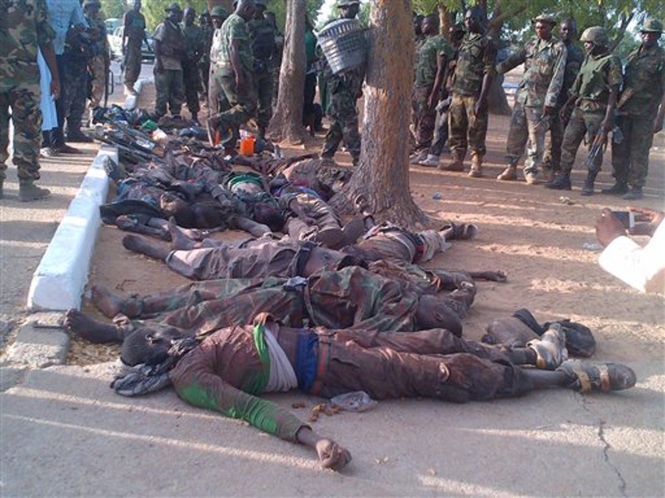He frequented gyms, lifted weights and played basketball. He wasn’t particularly religious. He liked going out to night clubs and was considered handsome, “a heartthrob,” his father said. Abdifatah ended up marrying three times, having eight children in all. His father hoped he would join the military.
Late last year, Abdifatah, 29, abruptly left his families, and traveled to Britain, then Syria, joining the radical militants of the Islamic State as they began sweeping across parts of Syria and Iraq. He posted photographs to Facebook and elsewhere earlier this year, showing him holding the Quran and AK-47s. In August, he was reportedly killed in Syria.
He was the second American to die there.
“I was very sad when I heard it. ‘Why he would go to an Arab land?’ I asked myself,” Abdi told VOA. “They [Arab countries] don’t help us; instead the United States helped us. ‘Why he chose to leave this good land?’ I asked. I was very unhappy.
“What I would say to the crazy youth who went to the Arab countries for harmful things is they are wrong,” he said. “This is like madness.”
The issue of Americans being radicalized, recruited to fight in the cause of radical Islamic terror groups, is capturing national attention, sowing fear that some could return unnoticed to commit attacks at home. With more than 100 Americans having traveled to Syria since 2011, President Barack Obama gave open voice to those fears on September 10: “Trained and battle-hardened, these fighters could try to return to their home countries and carry out deadly attacks.”

Of those who have traveled to Syria, at least 13 Somalis were from Minnesota, according to a VOA tally, a number that includes at least two girls. Two more Somali girls, and a Sudanese girl, all from the Denver area, were stopped in Germany on October 19, as they headed to Syria.
For Minnesota’s Somali community, the largest in the United States, this isn’t a new phenomenon: between 2007 and 2010 some two dozen men traveled to Somalia to fight “jihad” there. As before, the issue is bringing unwanted scrutiny from the FBI and local police; a federal grand jury is nearing the end of its investigation into the recruiting and who’s responsible.
The Somali community’s experience is a window: into how difficult it is to counter radicalization; into the mistrust and alienation that recruiters thrive on to draw people to radical jihad: in Somalia, Syria or elsewhere.
CONTINUE READING HERE…

 In the front of the room, a handful of Russian opposition activists shouted, “Shame!” at the director. In the back, out of the spotlight, was the event’s organizer — a fast-talking, nattily dressed man in a dark blue, double-breasted suit standing at a small table, sipping bottled water and quietly watching the commotion.
In the front of the room, a handful of Russian opposition activists shouted, “Shame!” at the director. In the back, out of the spotlight, was the event’s organizer — a fast-talking, nattily dressed man in a dark blue, double-breasted suit standing at a small table, sipping bottled water and quietly watching the commotion. on money, power, and strange plot twists. The most eye-opening particulars of the case, however, aren’t even officially on the docket: an audacious $230 million tax-fraud scheme, allegedly carried out with the complicity of Russian government officials, followed by the posthumous conviction of а whistle-blowing tax auditor and the trial in absentia of a crusading British-American financier.
on money, power, and strange plot twists. The most eye-opening particulars of the case, however, aren’t even officially on the docket: an audacious $230 million tax-fraud scheme, allegedly carried out with the complicity of Russian government officials, followed by the posthumous conviction of а whistle-blowing tax auditor and the trial in absentia of a crusading British-American financier.







